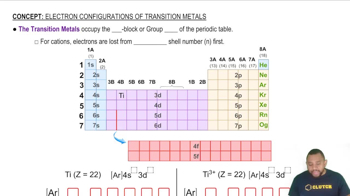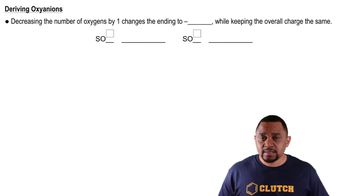Here are the essential concepts you must grasp in order to answer the question correctly.
Ionic Compounds
Ionic compounds are formed from the electrostatic attraction between positively charged cations and negatively charged anions. In the case of CoSO4, cobalt (Co) acts as the cation, while the sulfate ion (SO4) serves as the anion. Understanding the nature of ionic bonds is essential for correctly naming and identifying these compounds.
Recommended video:
Nomenclature of Transition Metals
Transition metals can exhibit multiple oxidation states, which affects how they are named in compounds. The oxidation state of the metal is indicated by a Roman numeral in parentheses following the metal's name. For CoSO4, cobalt typically has a +2 oxidation state, leading to the name cobalt(II) sulfate.
Recommended video:
Polyatomic Ions
Polyatomic ions are ions composed of two or more atoms covalently bonded together, which carry a net charge. The sulfate ion (SO4) is a common polyatomic ion with a -2 charge. Recognizing polyatomic ions and their charges is crucial for correctly naming compounds that include them, such as CoSO4.
Recommended video:
Polyatomic Ion Variations
 Verified step by step guidance
Verified step by step guidance


